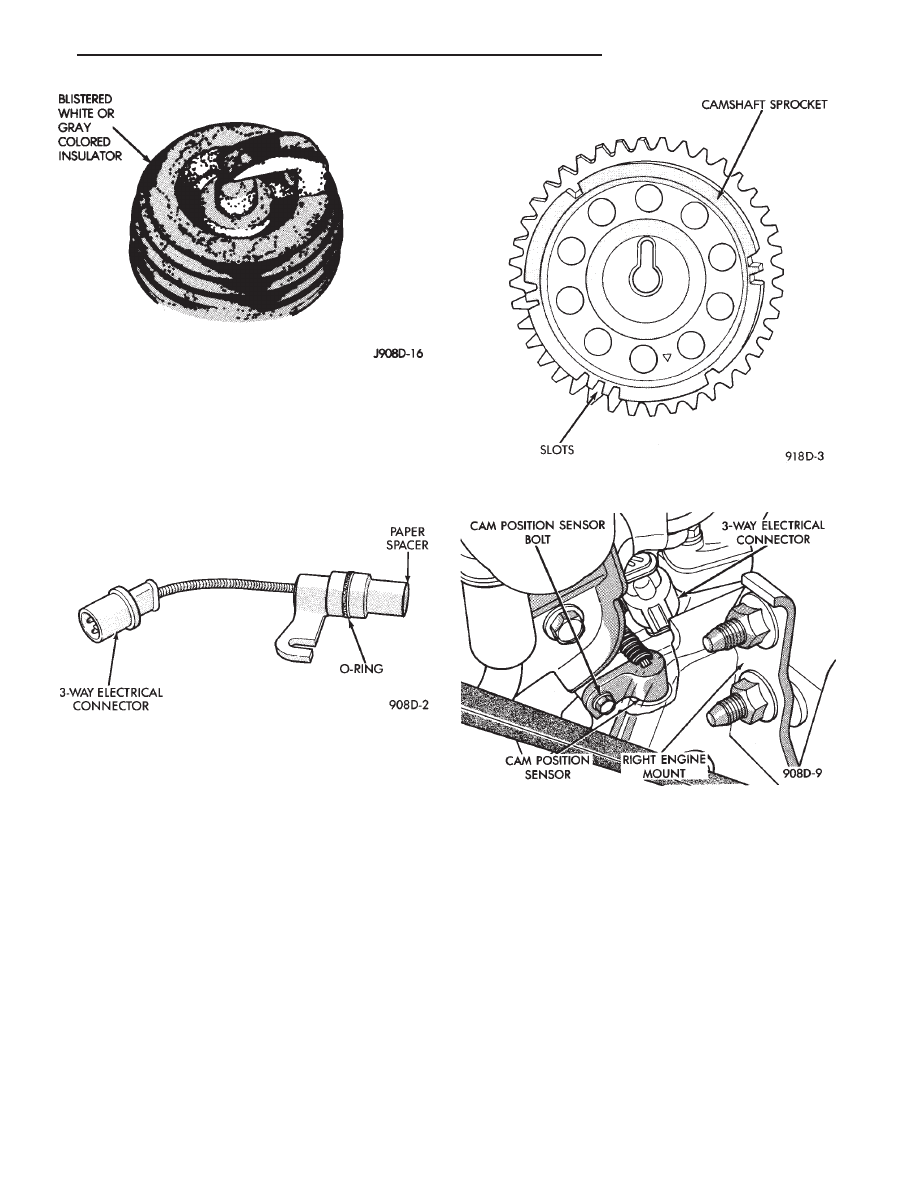Chrysler Town & Country/Voyager, Dodge Caravan, Plymouth Voyager. Manual - part 205

input sent to the engine controller. The engine control-
ler interprets the camshaft sensor input (along with
the crankshaft sensor input) to determine crankshaft
position. The engine controller uses crankshaft posi-
tion reference to determine injector sequence and igni-
tion timing.
The camshaft sensor determines when a slot in the
camshaft gear passes beneath it (Fig. 14). When a slot
is sensed, the input voltage from the sensor to the
engine controller switches from low (less than 0.3 volts)
to high (5 volts). As the slot or window passes, the input
voltage is switched back to low (less than 0.3 volts).
The camshaft sensor is mounted to the top of the
timing case cover (Fig. 15). The bottom of the sensor is
positioned above the camshaft sprocket. The distance
between the bottom of sensor and the camshaft
sprocket is critical to the operation of the sys-
tem. When servicing the camshaft sensor, refer to
the 3.3L Ignition System—Service Procedures
section in this Group.
CRANKSHAFT TIMING SENSOR
The crankshaft sensor (Fig. 16) senses slots cut into
the transmission driveplate extension. There are a 3
sets of slots. Each set contains 4 slots, for a total of 12
slots (Fig. 17). Basic timing is set by the position of the
last slot in each group. Once the engine controller
senses the last slot, it determines crankshaft position
(which piston will next be at TDC) from the camshaft
sensor input. It may take the controller up to two
thirds of an engine revolution to determine crankshaft
position.
The engine controller uses crankshaft position refer-
ence to determine injector sequence and ignition tim-
ing. Once crankshaft position has been determined, the
engine controller begins energizing the injectors in
sequence.
The crankshaft sensor is located in the transmission
housing, above the vehicle distance sensor (Fig. 18).
The bottom of the sensor is positioned next to the drive
plate. The distance between the bottom of sensor
and the drive plate is critical to the op-
Fig. 12 Spark Plug Overheating
Fig. 13 Camshaft Sensor
Fig. 14 Camshaft Gear
Fig. 15 Camshaft Sensor Location
.
IGNITION SYSTEMS
8D - 29